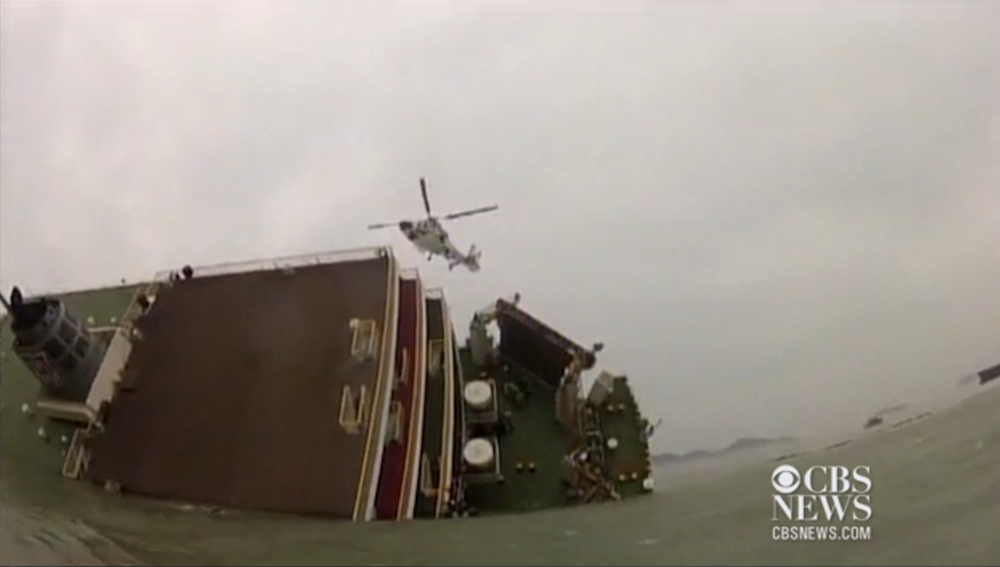South Korea Ferry: How Can a Huge Ship Sink?

The sudden sinking of a ferry carrying 475 passengers off South Korea's southern coast brings up the question: How can a large, modern passenger ship just sink?
A number of things can cause such a vessel to go down, from running aground on the ocean floor, to cargo shifting and capsizing the ship. Once the damage is done, ship officials must act quickly to evacuate passengers to avert a disaster, maritime experts say.
Millions of passengers take to the sea each year aboard ferries and cruise ships, and most of the time, the vessels return them safely to port. But from the sinking of the South Korean ferry to the Italian cruise liner Costa Concordia to the Titanic, disasters do occur. And when they do, the results can be tragic. [Disasters at Sea: 6 Deadliest Shipwrecks]
Causes of sinking
What caused the Sewol, the ill-fated ferry sailing from Incheon, in northwestern South Korea, to the island of Jeju to tilt steeply to one side and fill with water Tuesday morning (April 15) is not yet known. But many survivors said they heard a loud crash as the ship started tilting sharply.
"We obviously don't know a whole lot yet," said Rick Comeau, a vice president at the Maritime Simulation Institute in Newport, R.I. "However, it certainly sounds from the outset like the ship struck something."
Large ferries and cruise ships are compartmentalized, both front-to-back and side-to-side — "like an ice cube tray," Comeau told Live Science. If one compartment gets punctured, water should only flood that area.
Get the world’s most fascinating discoveries delivered straight to your inbox.
In the case of the Titanic, which scraped an iceberg and sank in 1912, the ship's compartments were connected to each other at the top, so water entered the front bulkheads and flowed from one to the next, Comeau said.
Similarly, when the Costa Concordia ran aground off the coast of an Italian island in 2012, the watertight doors between compartments were open, allowing water to inundate the vessel.
Investigators are looking into the possibility that the Korean vessel was off course when the incident occurred, and may have hit something.
"We don't know specifically what happened with the Korean ferry, but it sounds like whatever it hit was long enough that it flooded multiple compartments," Comeau said.
If a ship has been punctured, creating a small hole, the crew will normally slow or stop the ship so that it doesn't push too much water into the opening in the ship's hull where the water is flooding in, Comeau said. Another option is "counter flooding" the vessel by adding water to the other side. But if the ship is overflooded, it will sink. The ship's architect creates a book of guidelines for how much flooding the ship can withstand before it will sink, according to Comeau.
Another possibility is that large swells or a hasty maneuver could have caused the ship's cargo to shift to one side, changing the vessel's center of gravity and making it tilt over, according to Michael Bruno, a dean of engineering at Stevens Institute of Technology in Hoboken, N.J.
"Violent movement from waves could cause dislodging of cargo," Bruno told Live Science. Alternatively, "a sudden movement of the vessel itself [such as a fast turn, at high speed] can cause the vessel to roll," he said.
To err is human
All too often, it's not mechanical error but human error that is responsible for a maritime disaster, experts say.
"Some events are recoverable, some are not," Comeau said. But once something goes wrong, the ship's officers need to recognize when to declare an emergency, send out a mayday signal and get people on lifeboats, he said.
With the South Korean ferry, the captain was not the normal captain, but a relief, or backup, captain, according to Comeau. Many of the survivors said they were told not to move, a CNN affiliate reported, which may have delayed evacuation efforts.
"You can't out-engineer human error," Comeau said, but regular emergency training and refresher courses are essential, he added.
Follow Tanya Lewis on Twitterand Google+. Follow us @livescience, Facebook& Google+.



